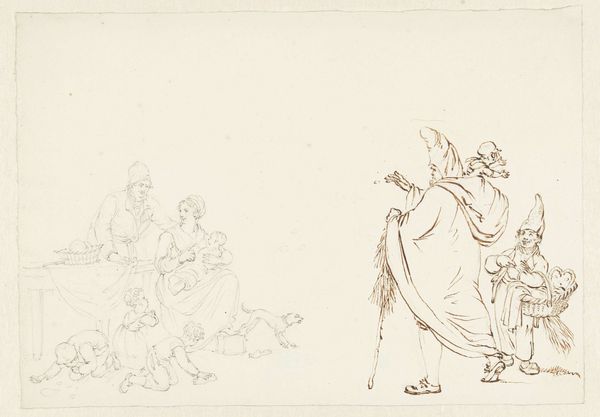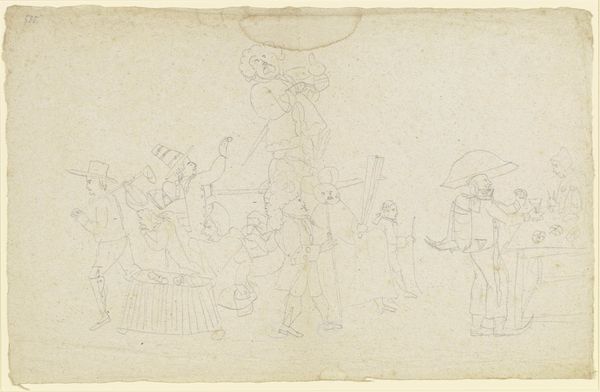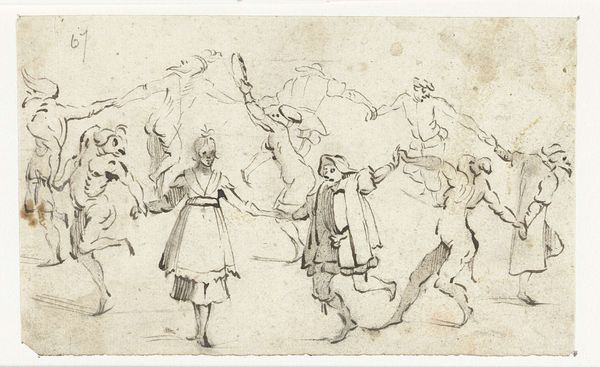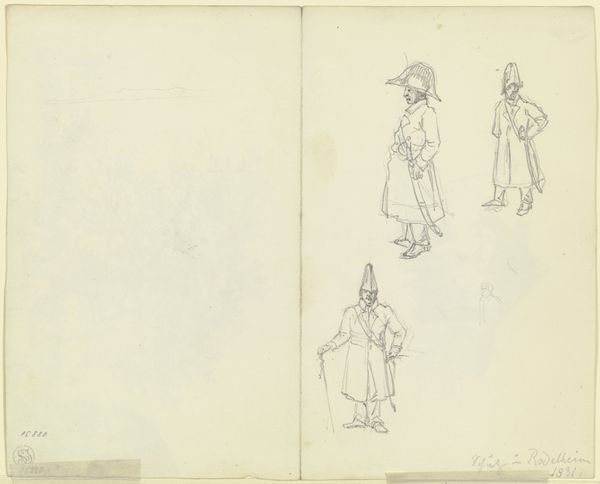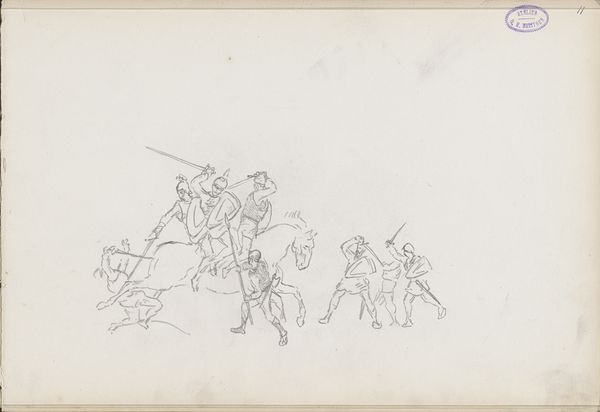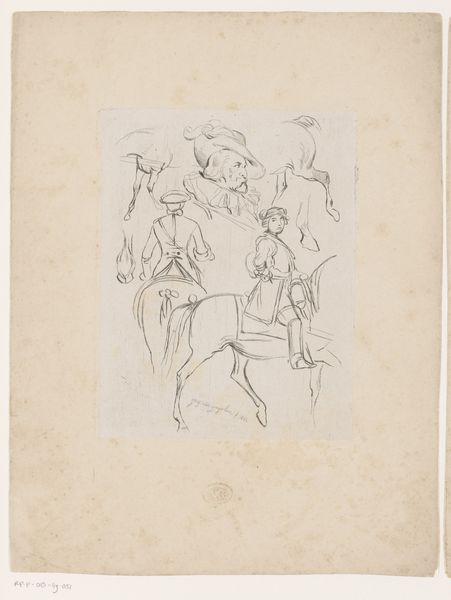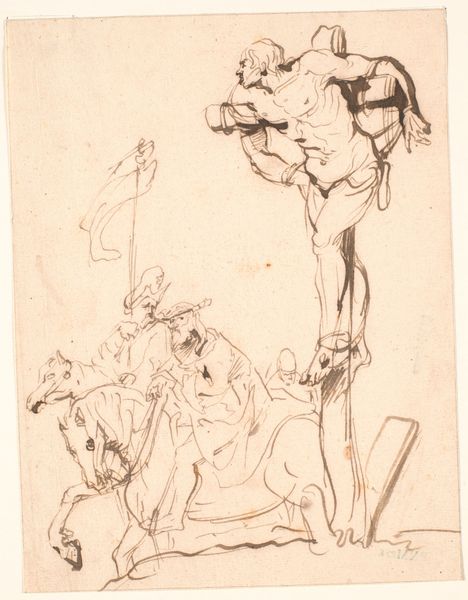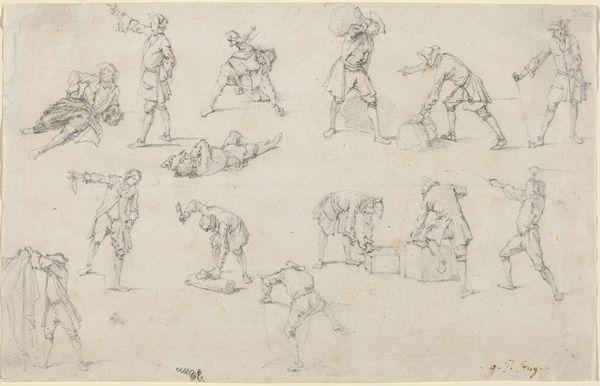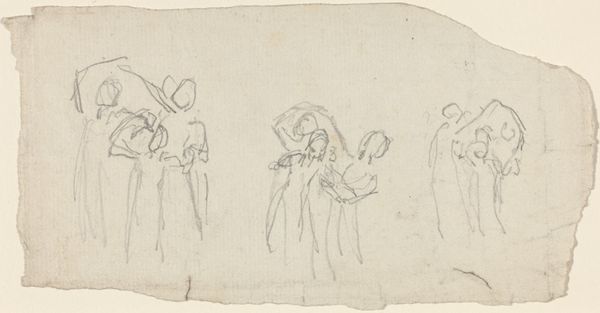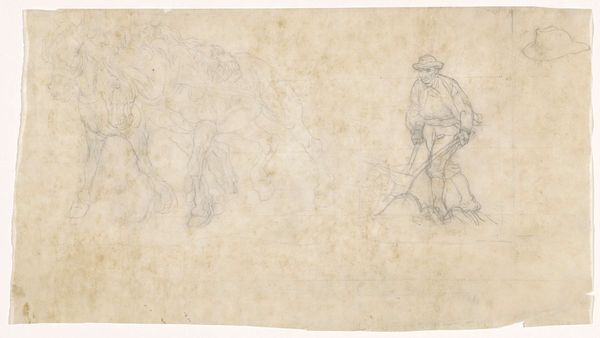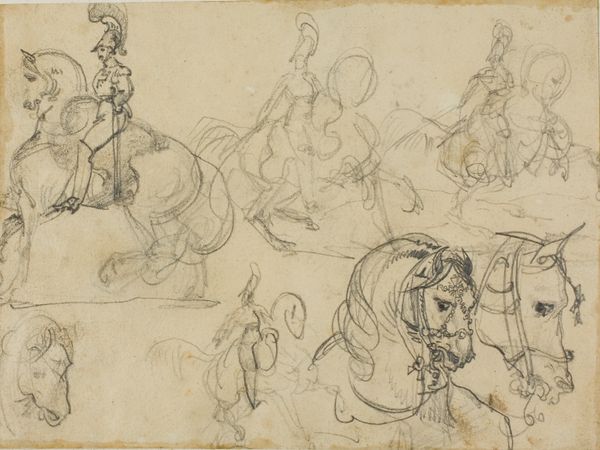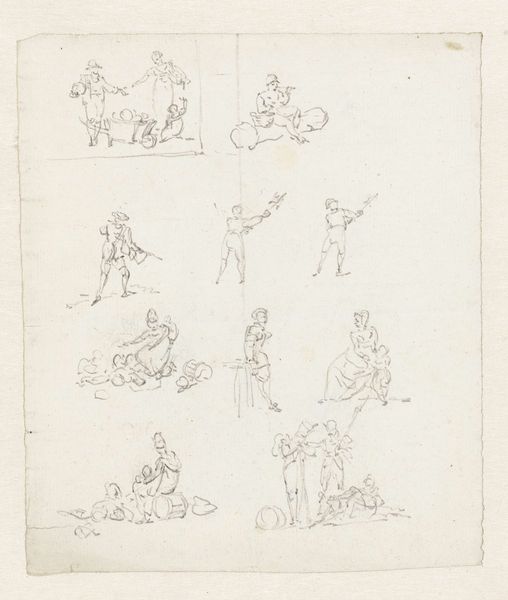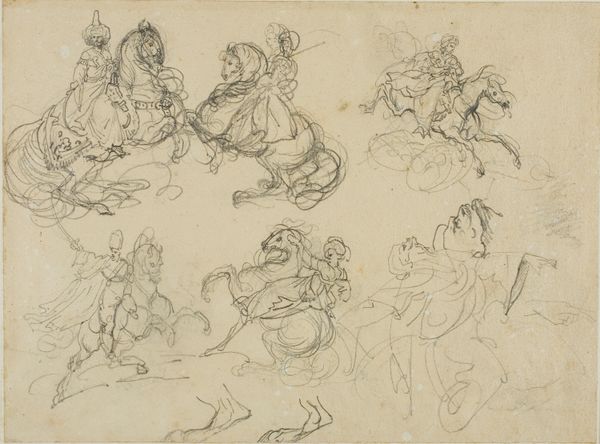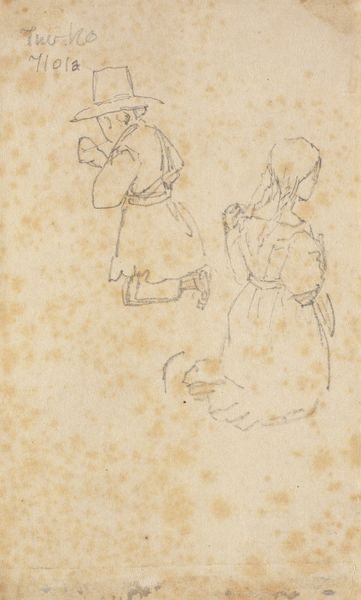
drawing, paper, pencil
#
drawing
#
light pencil work
#
pencil sketch
#
figuration
#
paper
#
personal sketchbook
#
romanticism
#
pencil
#
sketchbook drawing
#
pencil work
#
genre-painting
#
sketchbook art
Dimensions: height 266 mm, width 208 mm
Copyright: Rijks Museum: Open Domain
Editor: This drawing, "Sketches of Dancing Peasants" by Hendrik Abraham Klinkhamer, was created sometime between 1820 and 1872 using pencil on paper. It's currently held at the Rijksmuseum. I'm struck by how the lightness of the pencil creates such a fleeting, ephemeral feeling. What do you see in this piece? Curator: It's interesting that you pick up on that ephemeral quality. For me, these aren't just figures dancing, they’re embodiments of communal joy and fleeting moments of shared experience. Consider the hats adorned with flowers. Flowers, especially in the Romantic period, carried a potent symbolic language. They speak of ephemerality, yes, but also of love, celebration, and a connection to nature. What might that suggest about the people depicted? Editor: It suggests they’re deeply connected to the land, and maybe their celebrations are tied to specific seasonal changes? It also feels a bit idealized, almost like a memory of simpler times. Curator: Precisely! The "genre painting" aspect reinforces this. These dances likely weren’t captured in the moment, but remembered, reconstructed through cultural memory. Klinkhamer is not merely sketching; he's preserving an idea of Dutch folk culture, idealizing their spirit through dance and costume. Notice how no one's face is perfectly detailed - they represent types, not individuals, drawing upon deeply rooted archetypes of peasantry. Editor: So the “sketches” label almost hides how carefully constructed these images are, less reportage, and more symbolic reconstruction. Curator: Exactly. These “sketches” resonate as fragments of a cultural mirror, reflecting a longing for an imagined past, for something authentic. The artist's light touch serves not to diminish the scene, but to imbue it with a tender, nostalgic aura, prompting us to contemplate what has been lost, or perhaps, reimagined. Editor: That’s given me a lot to think about! I had not considered this was idealizing, perhaps, even creating a memory that wasn’t quite real. Thank you for that fascinating interpretation!
Comments
No comments
Be the first to comment and join the conversation on the ultimate creative platform.
